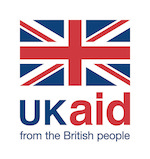Interview with Richard Ross, Cash Based Intervention Officer with the UNHCR, the UN Refugee Agency
GSMA: Can you tell us a little bit about the current situation with returnees coming back to Burundi?
Richard Ross (RR): Most Refugees fled Burundi following the events of 2015. Since September 2017, however, as security situation was gradually improving in the country, UNHCR and its partners, including the Governments of Burundi and Tanzania, have been facilitating the voluntary return of Burundian refugees, mostly from Tanzania. To date, UNHCR has helped repatriate approximately 83,000 Burundian refugees. The UNHCR operation based in Tanzania is responsible for identifying the majority of refugee households who wish to return to Burundi.
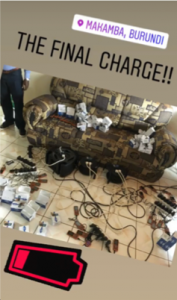
Charging phones the night before the pilot began
GSMA: What sort of assistance does UNHCR normally provide to returnees?
RR: Once refugees have declared their intention and have registered, UNHCR Burundi, with our counterparts in Tanzania, organise convoys that transport the families, by bus, outside Tanzania to one of our four transit centres within Burundi. Typically, the families will spend one evening at the transit centre, receiving hot meals, medical check-ups and the opportunity to report any protection cases. Furthermore, the Government of Burundi is present to issue formal certificates recognising their decision to return. UNHCR, with the World Food Programme (WFP), also provides assistance-packages, aimed to help the returnees in the initial reintegration phase, including food rations for three months, non-food items such as buckets, kitchen sets, and mosquito nets as well as a cash-grant. This cash-grant, in the past, has been distributed by our partner Caritas, in an envelope and has been calculated per family size and age. It is intended to help with the immediate expenses, such as transport. In 2020, however, the amounts of the cash grant per person, increased from 40 USD to now 70 USD (18+).
GSMA: Why did you decide to try using mobile money for these cash transfers?
RR: In light of the recent increase mentioned above and a discussion underway to further monetise the Non-food Item (NFI) kit, UNHCR hoped to minimise the amount of physical cash being distributed and carried by the returnee. Furthermore, UNHCR’s philosophy, across the world, is to prioritise payment- modalities most capable to improve security, and if possible, promote financial inclusion to those who do not possess a bank account.
In the context of Burundi, mobile money transfers could also enable the beneficiary to receive the assistance remotely and if needed, in multiple instalments. Mobile money could provide the returnees with greater discreetness while resettling into communities. Lastly and perhaps most importantly, as social-distancing grows more real with COVID-19, providing each household with a SIM card and mobile phone would open a new door in how UNHCR could remain in contact with returnees once they leave the transit centre.

Training sessions for returnees on phone functionalities
GSMA: Who did you work with in this pilot?
RR: In the summer of 2019, UNHCR Burundi signed a framework-agreement with the mobile network operator and mobile-money provider Viettel Burundi S.A also known as Lumitel. The partnership marked the first step towards “direct implementation”, where UNHCR contracts the services of a private-sector entity to assist with payments, instead of relying on an implementing partner, such as a local non-governmental organisation (NGO).
GSMA: Can you walk us through the process of how the pilot happened? How did you register people for mobile services?
RR: On Tuesday, February 11th, the pilot proceeded as planned. UNHCR, in addition to the NFI kits and food rations, provided each head-of-household with a new mobile phone and SIM card.
With the support of Caritas, a local partner, Lumitel was responsible for registering programme beneficiaries, organising training and demonstrations on how to receive, send and withdraw funds correctly. UNHCR and Lumitel had also created and disseminated a number of communication tools, including videos, flyers and audio recordings to assist the beneficiaries (many of whom are illiterate) compose and remember a secret PIN code.
In order to ensure Burundi’s Know Your Customer (KYC) regulations would not disqualify the many returnees who no longer possessed a national ID card, Lumitel sought approval by the Central Bank to accept the temporary certificate, issued at the UNHCR transit centre, as a valid form of identification for registering and activating a mobile money account.
Once beneficiaries received their certificates, they had their photos taken, and key-information recorded, including mobile phone numbers. Moments later, they received a text notifying them that their new “lumicash” account was activated. Once all beneficiaries were processed and accounts were active, Lumitel transferred the funds from UNHCR’s E-wallet into each beneficiary’s newly opened Lumicash account. Each phone received two text messages at the same time, notifying the beneficiary they received one transfer for assistance and one transfer to help cover their cash-out fee.
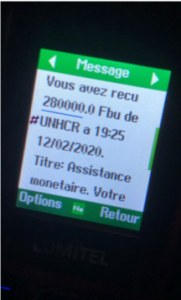
Messages coming in confirming a cash transfer had arrived
GSMA: As part of this pilot that you provided people with phones. Why did you decide to do this and what sort of training did you provide?
RR: Yes, as mentioned, it is rooted in a common cash approach, where both UNHCR and WFP see the utilisation of cash transfers via mobile money platforms, alongside the provision of one phone per family, as a critical break-through to improve cost and operational efficiency at the transit centres. As WFP considers further monetising its food-basket, both agencies could leverage the same mobile money account without having to duplicate systems or provide two SIM cards.
The phones also present several other programmatic opportunities, enabling UNHCR to conduct Post Distribution Monitoring remotely; mobile technology could revolutionise how we simply stay in touch with returnees for purposes of information-sharing or incident reporting. Our Protection-Monitoring initiative, which is currently conducted in person, could have another alternative if personal contact is difficult or impossible.
GSMA: And in terms of the actual cash transfers you provided people using the phone – how did that work? Were people given an opportunity to cash out right away?
RR: Yes, in our framework-agreement, Lumitel must mobilise a sufficient number of cash-out agents, proportionate to the size of the convoy, to ensure all beneficiaries are able to make a withdrawal before leaving the transit centre.
However, one very interesting observation during the pilot was to see that over a third of all beneficiaries felt in no rush to withdraw their money at the transit centre. Instead, they were just happy to board the buses without the cash. One explanation, and further reinforced in the results of the post distribution monitoring, reveal that many perceive their money, secured electronically, would be safer while traveling. It also signifies that the perception of their mobile-money balance, communicated by SMS, merits the same value as physical cash would in their hand. This may also explain why beneficiaries erupted into a cheer and celebration that filled the transit centre immediately after receiving the text messages crediting their accounts, whereas the cash-out, the following morning, took place without any visible emotion. For a segment of the population that may have not had much previous direct hands-on experience operating mobile money, the pilot certainly revealed that in Tanzania, or perhaps prior to fleeing, returnees have been exposed to it enough to trust mobile money as a reliable payment-modality.
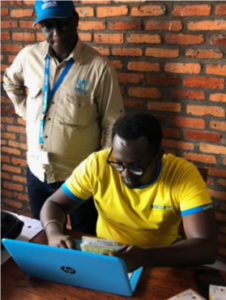
A Lumitel employee registering returnees for SIM cards
GSMA: What were the biggest challenges in this process?
RR: Although the implementation model, at the transit centres, has been practiced and fine-tuned since 2017, introducing mobile money, instead of cash-in-envelope, introduced a whole series of never-before-done steps and procedures, especially given the relatively short amount of time UNHCR has with the beneficiary. Thus, the biggest challenges were felt most in time-management, in particular, discovering, first hand, the time-consuming reality of registration (SIM card & mobile money account). This was due to several factors: the recording of information, the photo-taking, the reset of the PIN Code and selecting the right language, compounded by the unreliable internet connection, delaying the processing of data.
Certainly, in the future, UNHCR and Lumitel must approach Registration differently and identify all pre-emptive measures to securely share key registration data in advance (with appropriate consent) while cutting out unnecessary steps at the transit centre.
GSMA: And what does the future hold?
RR: In this unprecedented implementing climate, as suggested before, leveraging remote solutions, such as mobile money transfers or equipping beneficiaries with mobile phones, has never been so important.
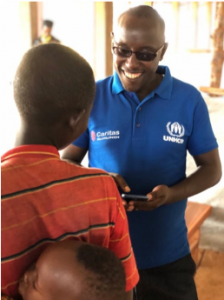
UNHCR staff helping a returnee with his phone
UNHCR will continue to prioritise our collaboration with Lumitel and improve, from lessons learned, how we deliver cash assistance. Ideally, we would also like to see other UN agencies to join the delivery system when we are supporting the same household.
Emergency funding received as a result of COVID-19, will also give us the opportunity in the near future to embed mobile technology, specifically mobile money, more intentionally into our programming with refugees, both urban and in-camp.
